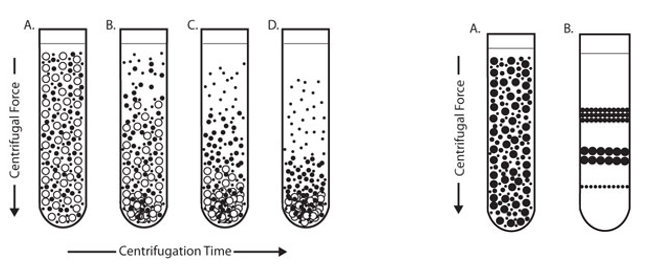Mitochondrial Isolation and Mitochondrial Protein Purification Service
Online InquiryCreative Proteomics offers mitochondrial and mitochondrial protein isolation and purification for animal tissues, cells and yeast and help you obtain purified mitochondrial proteins for subsequent assays.
Mitochondria is an important organelle in cells and an important place for energy production. They provide more than 90% ATP for cells and play a key role in cell activities. The occurrence of many human diseases is closely related to the abnormal function of mitochondria. Mitochondrial dysfunction plays an important role in the pathogenesis of diseases. In order to better analyze the dynamic changes of mitochondrial protein composition, expression level and modification state, and to elucidate protein function, protein interaction, etc., it is first necessary to separate mitochondrial proteins.
Advantages of Our Mitochondrial Isolation and Mitochondrial Protein Purification Services:
- Rich experience in mitochondrial separation and purification.
- Obtained pure mitochondria with low impurities.
- Mitochondria can be isolated and purified from tissues, cultured cells, yeast and plant cells.
- Protein can be extracted from multiple parts of the mitochondria.
- We will conduct purity verification tests to ensure that the isolated protein reaches the target purity, otherwise there is no charge.
We Provide the Following Services, including but not Limited to:
- Single organelle separation and purification
- Multicellular organelle separation and purification
- Mitochondrial protein extraction
Methods of Mitochondrial Isolation and Mitochondrial Protein Purification:
1. Single organelle - mitochondrial separation and purification
The mitochondria are extracted using conventional differential centrifugation, and although the mitochondria can be rapidly separated, the separated mitochondria contain a large amount of impurities. This method is based on the difference in sedimentation coefficient and organelle density for organelle separation. The intact organelles are enriched from the entire cell extract by disrupting the cells under mild conditions to maintain organelle integrity. The impurities contained are mainly derived from cytosolic proteins and endoplasmic reticulum. Another method of separation and purification is density gradient centrifugation, which separates particles based on the buoyant density or settling rate of the particles. This method is more cumbersome and time consuming, but the protein obtained is more pure.
The purity requirements for mitochondrial purity determine the appropriate method required. If a metabolic study is performed, differential centrifugation can be selected. Density gradient separation is more appropriate if the exact location of the protein is studied or if proteomics studies are necessary for sample purity. If you need higher purity, we will provide an improved differential centrifugation combined with density gradient centrifugation to meet you. The crude mitochondria obtained by differential centrifugation were purified by the sucrose density gradient, and the impurity protein content was greatly reduced.

2. Isolation and purification of multiple organelles
If you need multiple organelle proteins, then we will use the organelle fractionation method to separate and enrich the organelle proteins you need.
3. Extraction of mitochondrial proteins
We used the expansion of mitochondrial inner membrane to make the mitochondrial outer membrane swell and crack, and then extracted the proteins in the mitochondrial outer membrane, inner membrane and mitochondrial matrix through different steps of chromatography, centrifugation and precipitation.
Delivery
Test design, purity analysis report, extracted mitochondria and purified protein sample.
Want to learn more about mitochondrial protein characterization, functional research, dynamic analysis, interaction analysis services? We provide one-stop analysis of mitochondrial proteomics.
References
- Komatsu S, Hashiguchi A. Subcellular Proteomics: Application to Elucidation of Flooding-Response Mechanisms in Soybean. Proteomes, 2018, 6(1): 13.
- Taylor N L, Millar A H. Plant mitochondrial proteomics. Plant Mitochondria. Humana Press, New York, NY, 2015: 83-106.
- Klodmann J, Sunderhaus S, Nimtz M, et al. Internal architecture of mitochondrial complex I from Arabidopsis thaliana. The Plant Cell, 2010, 22(3): 797-810.
* For Research Use Only. Not for use in diagnostic procedures.



